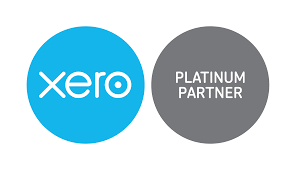
Stamp Duty Thresholds To Fall To Previous Levels from April 1
Anyone buying a property from April 1, 2025 will face higher levels of Stamp Duty Land Tax (SDLT) in England and Northern Ireland as the Stamp Duty thresholds fall back to their previous levels. The current higher threshold of £250,000 before people start to pay SDLT on their home purchase will
fall back to the previous level of £125,000 from this date.
First-time buyers will also face much higher fees when they buy a property after April 1, as the threshold where they start paying SDLT will fall from £425,000 to £300,000. It means anyone thinking of buying a new property in the coming months may want to try to complete the purchase before March 31 so they benefit from the lower SDLT charges.
What are the SDLT levels from April 1?
If you’re buying a property up until March 31, then you will pay no SDLT up to £250,000, then 5% on the next £675,000 – so on properties up to £925,000 – then 10% on the next £575,000 up to £1.5m, and 12% on the remaining cost of properties over £1.5m.
After April 1, you will pay no SDLT up to £125,000, then 2% from £125,001 to £250,000, then 5% from £250,001 to £925,000, then 10% from £925,001 to £1.5m, and 12% on any amount over £1.5m. This means that buying a £295,000 property before March 31 would create an SDLT bill of £2,250, but after April 1 this would rise to £4,750.
For first-time buyers, there will be no SDLT to pay up to £425,000 and then 5% on the amount from £425,001 to £625,000 up until March 31. But if you are buying a property worth more than £625,000, you cannot claim this relief and need to follow the SDLT rules for people who have bought a property before.
From April 1, there will be no SDLT to pay on the first £300,000 of a property, with 5% charged on the next £300,001 to £500,000. If the property is worth more than £500,000, you won’t be able to claim this relief and again need to follow the SDLT rules for every other home buyer.
These changes for first-time buyers mean the SDLT bill for a £500,000 property would be £3,750 before March 31, and will rise to £10,000 after April 1 – nearly three times as much.
What if I’m buying a second property?
The amount you pay for a second property is higher than you would pay if you’re buying a main home. These rates apply to a property or part of a property that is being purchased above £40,000, and you may even need to pay this higher level even if you are going to be living in the property as your home.
This can happen when you buy a new home, but have not yet completed the sale on your previous home by the end of the day that you buy the next property. In this instance, you will own two properties at the same time, triggering this higher level of SDLT.
The rates you would face both before March 31 and from April 1 are below:
The higher rates from 31 October 2024 to 31 March 2025
Property or lease premium or transfer value:
Up to £250,000 = 5% SDLT rate
The next £675,000 (the portion from £250,001 to £925,000) = 10% SDLT rate
The next £575,000 (the portion from £925,001 to £1.5 million) = 15% SDLT rate
The remaining amount (the portion above £1.5 million) = 17% SDLT rate
The higher rates from 1 April 2025
Property or lease premium or transfer value:
Up to £125,000 = 5% SDLT rate
The next £125,000 (the portion from £125,001 to £250,000) = 7% SDLT rate
The next £675,000 (the portion from £250,001 to £925,000) = 10% SDLT rate
The next £575,000 (the portion from £925,001 to £1.5 million) = 15% SDLT rate
The remaining amount (the portion above £1.5 million) = 17% SDLT rate
Source: Gov.uk
If you have to pay this higher rate because the sale of your home didn’t complete in time, then you should be able to reclaim this amount. If you sell or giveaway your previous main home within three years of buying your new main home, then you can apply for a refund. You can find out more at Gov.uk.
We can help you
If you are struggling to understand what your SDLT liabilities might be then please contact us and we will do everything we can to assist you








